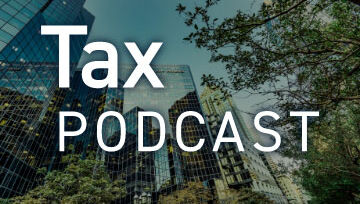On December 21, 2023, the Internal Revenue Service (IRS) announced the anticipated Voluntary Disclosure Program (VDP), which allows employers that received an Employee Retention Credit (ERC) refund to which they were not entitled to:
- Repay the ERC (minus 20%)
- Cooperate with any requests from the IRS for more information
- Sign a closing agreement
The VDP is available to eligible employers through March 22, 2024. This is the second program in the series that the IRS promised to address the many thousands of dubious ERC claims filed.
Eligible Employers
The VDP is available to employers, that claimed and received an ERC, if they meet the following requirements:
- The ERC, claimed on an employment tax return, was already processed and paid as a refund.
- The refund paid by check was cashed or deposited, or the refund paid in the form of a credit was applied to the tax period or another tax period.
- The employer now believes it is entitled to $0 ERC for the specific quarter.
- The employer is not under an employment tax examination by the IRS.
- The employer is not under criminal investigation by the IRS.
- The employer has not received a letter or notice from the IRS disallowing the ERC.
Employers using third-party professional employer organizations (PEOs) or other third-party payers must contact the PEO to apply for this program. Also, if the employer willfully claimed an ERC that was fraudulent, applying for the VDP will not exempt the employer from potential criminal investigation.
Application Process
- Prepare a Form 15434, Application for Employee Retention Credit Voluntary Disclosure Program (signed by an authorized person).
- Prepare ERC-VDP Form SS-10, if the application includes tax periods ending in 2020 (signed by an authorized person).
- Submit the application using the IRS Document Upload Tool by March 22, 2024, 11:59 PM (local time).
If an employer is unable to pay the full VDP amount, the employer can request an installment payment plan agreement to pay back the balance due over time. This can be done by including Form 433-B, Collection Information Statement for Business, in the VDP application package along with all required documents to support Form 433-B. The IRS will review Form 433-B and approve or deny the request.
Advantages of VDP
There are several benefits to using the VDP:
- The employer only needs to repay 80% of the ERC received.
- The employer does not need to repay any interest received with the ERC refund.
- The employer is not required to reduce its income tax wage expense deductions (in the years to which the ERCs relate) by the ERC amounts.
- The 20% reduction in the claim to be repaid is not taxable as income to the employer.
- The IRS will not charge penalties or interest on the claimed ERC if it is repaid in full (less the 20%) by the time the employer returns a signed closing agreement to the IRS.
- The IRS will not examine the ERC on the employment tax return for the tax periods resolved under the VDP.
IRS Processing of the VDP Applications
The IRS will review the application packages and verify the employers’ eligibility for the program. The IRS will then mail a letter acknowledging receipt of the application and whether it can proceed with the application or if it is rejected.
If the IRS proceeds with the application:
- The IRS will mail a closing agreement to the employer (if the IRS determines that the employer qualifies for the VDP).
- The employer will be required to pay the full VDP amount by using the IRS Electronic Federal Tax Payment System.
- If the IRS approves an installment agreement, the employer will receive a Form 433-D, Installment Agreement, with the closing agreement.
- An authorized person must sign the closing agreement, and Form 433-D, if applicable.
- Sole Proprietorship: The individual that owns the business.
- Corporation: The President, Vice President or other principal officer duly authorized to sign.
- Partnership: A responsible and duly authorized member, partner or officer having knowledge of its affairs.
- Single-Member LLC treated as a disregarded entity: The owner of the LLC or principal officer duly authorized to sign.
- Trust or Estate: The Fiduciary.
- The employer returns the completed forms to the IRS.
After the IRS receives a signed closing agreement, it will adjust the employer’s account to reflect the eliminated ERC amount. The employer does not need to submit amended returns correcting the ERCs. The terms of the VDP closing agreement cannot be appealed.
If an application is rejected, a letter from the IRS will explain why and offer potential solutions. An employer may be able to correct errors in the application and resubmit the VDP application package. If not, the employer may need to use an alternate approach and file an amended employment tax return.
The VDP is a generous program offered by the IRS for employers that were misled to believe that they were entitled to ERC benefits by third party ERC mills. The 20% reduction in the amount to repay is intended to mirror the fees paid to the ERC mill. The VDP has a very short window for employers to apply. It is scheduled to end on March 22, 2024.
Your Guide Forward
As a reminder, an employer not eligible to participate in the VDP because the employer has not received an ERC refund employer may be able to use the ERC claim withdrawal process instead. Cherry Bekaert can assist if help or advice on this process is needed.
For more details about VDP eligibility, see the IRS FAQ titled Who is eligible for the ERC-VDP?
Related Insights




